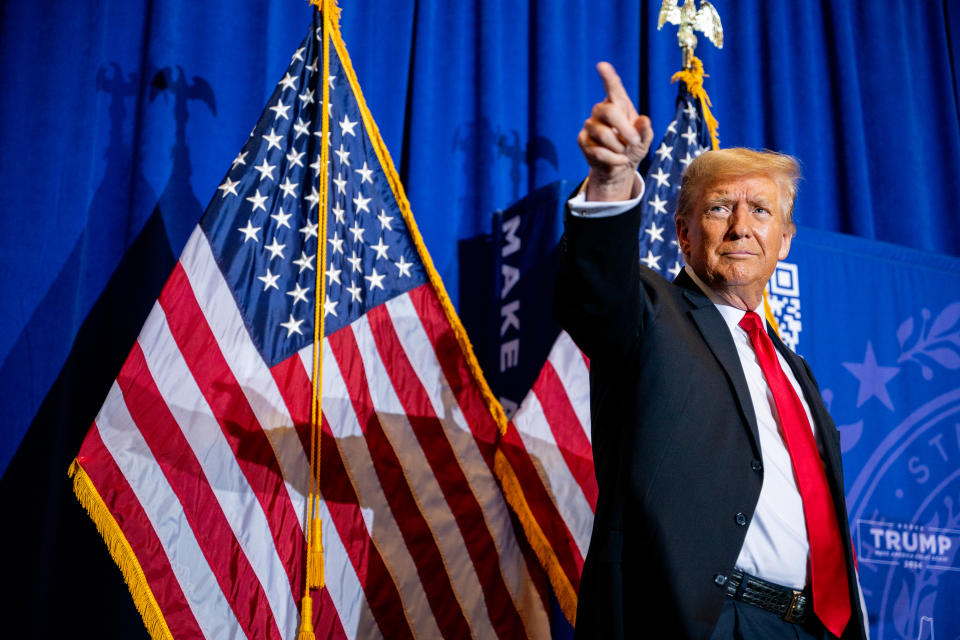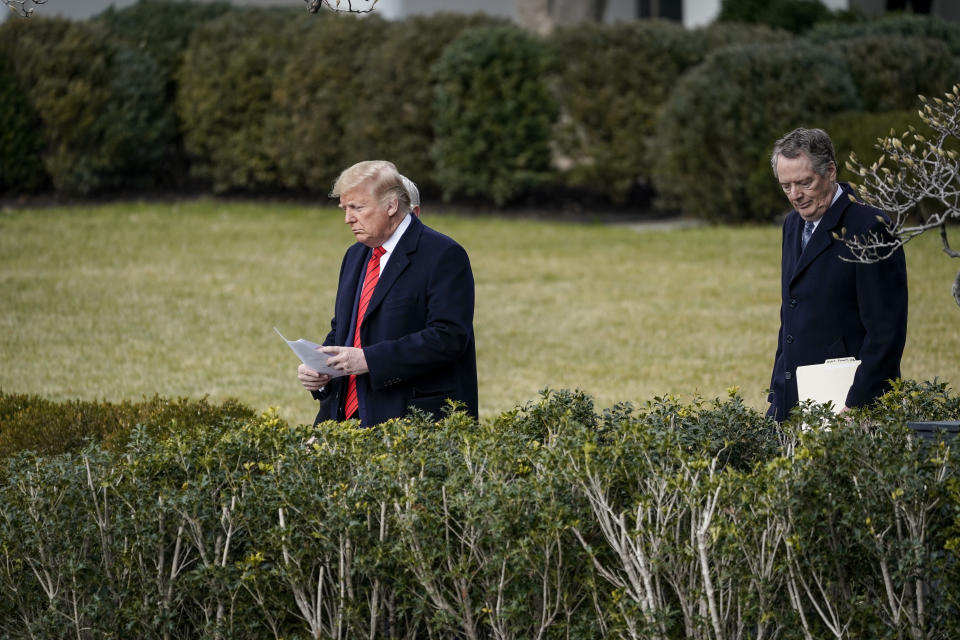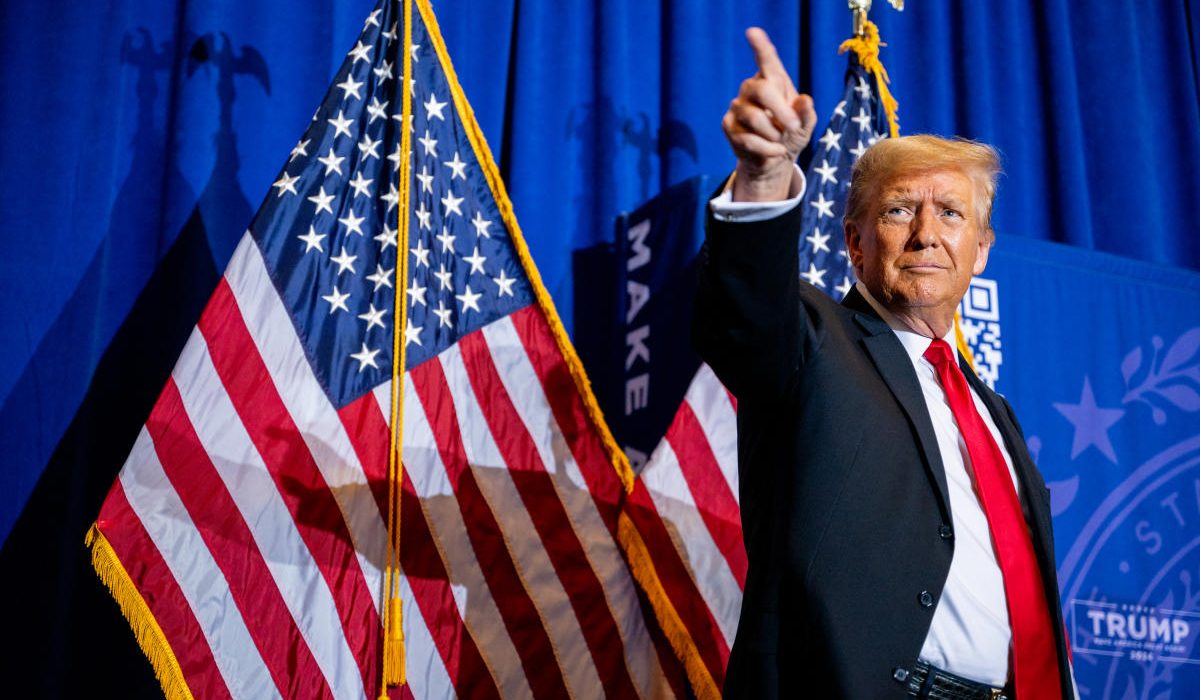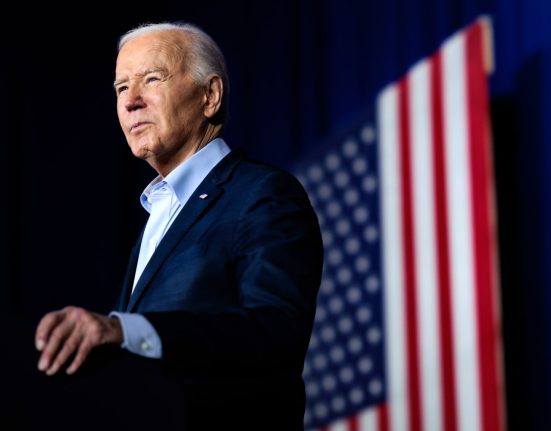Donald Trump’s agenda includes a range of policies that could create new inflation pressures in the years ahead.
The emerging debate among economists is exactly what those price effects would be if he wins.
Trump’s ambitious plans include 60% tariffs on Chinese goods and 10% duties on other global trading partners. He is also promising more tax cuts and an immigration crackdown, both of which could also be inflationary.
All could provide a new upward pressure on prices at a time when the future path of inflation remains uncertain.
The Federal Reserve’s campaign to bring down inflation has run into bumps this year, forcing policy makers to shift back to a higher-for-longer interest rate stance.
The central bank on Wednesday voted to keep rates at a 23-year high after a series of hotter-than-expected inflation readings.


A look at the issue from economists Ryan Sweet and Bernard Yaros of Oxford Economics found that a “full-blown Trump scenario” could push prices up between 0.5 to 1% in 2026 and 2027 as the polices take hold.
That’s on top of what the inflation rate would be otherwise and before any response from the Fed.
The report finds that Trump’s policies could trim the US real GDP in addition to spurring inflation.
Trump is proposing an array of business-world friendly provisions, Yaros added in a recent briefing, but “the boost to the economy from these fiscal changes are outweighed by the cost to the economy from across the board.”
Some Trump allies acknowledge the possibility of price increases but say the effects could be minimal. Left-leaning groups, meanwhile, predict thousands of dollars in additional costs for American households.
One estimate on the high side in recent months is from Adam Posen, the president of the Peterson Institute for International Economics. He has estimated Trump’s 10% tariff plan alone would push inflation up by “two to three percentage points.”
Trump’s pushback: Experts don’t ‘know what they’re talking about’
Trump and his allies downplay the concerns. The former President recently pushed back against some studies on the costs of tariffs, saying in a recent Time interview that experts behind these studies don’t “know what they’re talking about.”
“I don’t believe it’ll be inflation,” he added of the effect of his tariff ideas, saying instead the impact would be a “lack of loss for our country.”
Trump’s advisers also often note that his 2017 and 2018 tariffs didn’t result in an inflation spike.
Robert Lighthizer was Trump’s trade representative and could be in line for another top job in 2025. He recently wrote in a memoir that Trump’s tariffs had a variety of positive effects for the US and “all of this has been achieved without any meaningful inflationary effect.”
Still, Trump’s proposal for tariffs in 2025 is far above what he implemented in 2017 and 2018. Trump has floated other new ideas like devaluing the dollar that could have additional inflation impacts.
While the former President eventually wants to use tariffs to decouple the US and Chinese economies, in the immediate term his proposed duties would be imposed on US companies as they bring goods in.
Past studies have shown that the brunt of those increased costs are borne by US consumers.
Trump’s push for another round of tax cuts could also spur inflation by increasing demand pressures and the amount of money in the US economy. He wants to extend all of the tax cuts he signed into law in 2017 as well as some new cuts like lowering the corporate tax rate from 21% to 15%.
Finally, Trump’s hardline immigration policies could be inflationary, economists say, by decreasing supply in the labor market and pushing up costs for businesses in the form of wage inflation.


Projections of a possible ‘rebound in inflation’
The tariffs, however, are front and center in most studies of how Trump’s policies could impact inflation and economic growth.
Another recent report from Capital Economics projected that Trump’s tariffs could subtract up to 1.5% from GDP and “trigger a rebound in inflation that could force the Fed to raise interest rates again.”
Paul Ashworth, the group’s chief North America economist, added in a note to Yahoo Finance that coming up with the specific inflation effect is difficult because when it comes to tariffs, it’s unclear exactly what levels Trump will end up pushing.
Indeed, in his recent Time interview Trump first said his tariffs could be “more than” his current proposals but then added in the next breath that it also “may be a derivative of that.”
There are also questions about whether Trump could try to undermine the independence of the Federal Reserve or even fire Fed Chair Jerome Powell if he retakes the presidency. Developments on that front could further complicate the inflation picture during a second Trump term.
Trump and Biden allies have also offered their own projections of what path inflation could take.
The Coalition for a Prosperous America is a group that supports higher tariffs and recently acknowledged prices could rise. But it posited that the net effects would be positive because of economic growth, saying real household incomes would increase by nearly $8,000.
On the other side, the left-leaning Center for American Progress has run the numbers on the 10% tariffs and it says that the duties translate to a roughly $1,500 annual increase in costs for the typical American household.
Trump has repeatedly signaled these policies from tariffs to tax cuts would be at the centerpiece of his agenda in 2025 if he wins.
Perhaps the key question — in addition to Trump’s neck-and-neck contest with President Joe Biden — is how the race for Congress ends up.
If Democrats hold power in either the House or Senate in 2025, they could stymie or scale back much of Trump’s plans. Split government — under either Biden or Trump — is often noted as perhaps the preferred outcome for markets.
As for Oxford Economics, it also ran a “limited Trump” scenario where he is forced to compromise, including with more targeted tariffs.
Trump would clearly be unhappy about that, but economists might be more sanguine.
The Oxford model found the inflation effects of “limited Trump” are much less pronounced, with price pressures roughly one third of the “full blown” scenario and a positive effect on real GDP through 2028.
Ben Werschkul is Washington correspondent for Yahoo Finance.
Click here for politics news related to business and money
Read the latest financial and business news from Yahoo Finance







